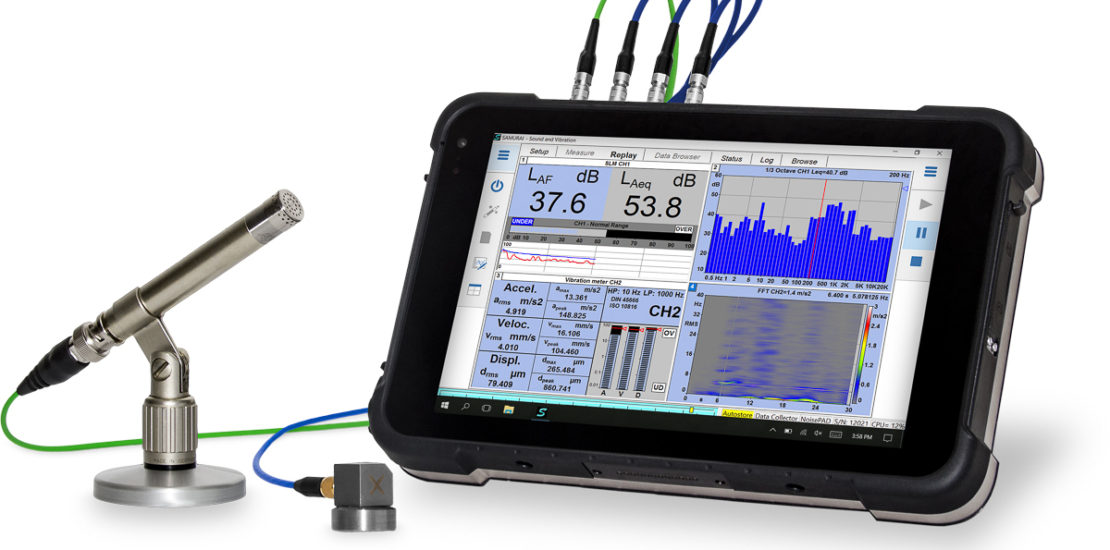
Sound Testing
SOUND TESTING
Sound Insulation Testing has numerous names which are used interchangeably within construction. The most common names in circulation include: sound testing, sound proof testing, noise testing, acoustic testing, and pre-completion testing. In principle all these names mean the same thing: Sound Insulation Testing and correspond to specific procedures of testing and standards detailed in multiple areas of legislation. For most (even professionals), this can be very confusing especially when asked by a Building Control Officer to provide certification that the construction meets the required standards.
Building Regulations Approved Document E refers to attached dwellings, flats or rooms-for-residential use. These can be new or converted dwellings in England and Wales but have different standards for testing. Pre-Completion Testing is the normal route to show the level of soundproofing for a building. Sound Insulation Tests apply to each type of separating wall and floor in the building.
Airborne Sound Insulation Testing
When testing separating walls or floors, an airborne test is performed. The Airborne Sound Insulation Test is designed to test sound that is transmitted through the air, such as speech.
The test is achieved by placing a specialised omnidirectional loudspeaker in a source room which produces a very high sound level. The speaker is designed to radiate sound uniformly in all directions, allowing correct insulation and reverberation time measurements to be achieved.
A level difference is recorded in the receiving room; either directly adjacent, above or below. This level difference is standardised to a reference value. The airborne result is a single number that can be compared to a performance standard.
Impact Sound Insulation Testing
When testing separating floors, an Impact Test is performed in combination with an Airborne Sound Insulation Test. The Impact Sound Insulation Test is designed to test the effects of impact on a floor structure such as footsteps.
The Impact Test utilises a UKAS Calibrated Tapping Machine placed on the floor of an upper room. The sound pressure level is recorded in the receiver room directly below the source room. The impact pressure level is standardised to a reference value. The impact result is a single number that can be compared to a performance standard.
British Standards
When performing an Acoustic Insulation (Sound) Test we utilise a British Standards for testing. The standard identifies how we test and rate the sound insulation in respect to Airborne and Impact Sound Insulation. These standards are noted below:
1) BS EN ISO 140-4 – _Acoustics – _Measurement of sound insulation in building and of building elements – _Part 4: Field measurements of airborne sound insulation between rooms.
2) BS EN ISO 140-7 – _Acoustics – _Measurement of sound insulation in building and of building elements – _Part 7: Field measurements of impact sound insulation of floors.
3) BS EN ISO 717-1 – _Acoustics – _Rating of sound insulation in building and of building elements – _Part 1: Airborne sound insulation (ISO 717-1)
4) BS EN ISO 717-2 – _Acoustics – _Rating of sound insulation in building and of building elements – _Part 2: Impact sound insulation
Building Regulations Approved Document E
Part E of the Building Regulations offers guidance on providing reasonable standards of sound insulation in residential buildings within England and Wales. It applies to all dwelling-houses, flats and rooms for residential purposes, from homes to hotels, and covers both new buildings and those undergoing refurbishment or conversion from a different use.
Approved Document Part E aims to improve occupant comfort and wellbeing by reducing noise transmission between neighbouring homes to sound and impact, as well as between internal spaces. To comply with Part E of the Building Regulations, residential buildings must use sound insulation systems that meet the required airborne and impact noise insulation levels, this is often achieved using Robust Details.
For internal walls, the required airborne sound insulation level is Rw 40 dB (laboratory test results). It applies to internal walls between bedrooms and other rooms, as well as between bathrooms and other rooms. However, it doesn’t include internal walls containing a door. Internal floors must also achieve minimum airborne sound insulation levels of Rw 40 dB.
Separating floors between new homes and purpose-built rooms for residential purposes must meet a minimum airborne sound insulation level of 45 dB DnT,w + Ctr (or 56 dB DnT,w in Scotland). This refers to on-site test results rather than laboratory and very different to internal walls. For rooms created by a change of use or conversion, the minimum is 43 dB DnT,w + Ctr (or 53 dB DnT,w in Scotland).
The maximum impact sound transmission level is LnTw 62 dB (LnTw 56 dB In Scotland) for separating floors between new homes and purpose-built rooms for residential purposes. Between rooms created by a change of use or conversion, the maximum impact sound transmission level is LnTw 64 dB (LnTw 58 dB In Scotland).
Equipment
Unsurprisingly The equipment utilised for Sound Insulation Testing is highly specialised and requires regular and consistent testing to maintain accuracy. All measurement equipment complies with the requirements of accuracy class 0 or 1 defined in IEC 60651 and IEC 60804. The complete measurement system including the microphone is adjusted before each measurement using a sound calibrator. All our equipment is calibrated by a UKAS approved laboratory to maintain accuracy during a field test.
The Building Compliance Team is registered with SITMA which regularly audits results to maintain standards and accuracy. If you are unsure if your development requires a sound insulation test, The Building Compliance Team are able to help.
